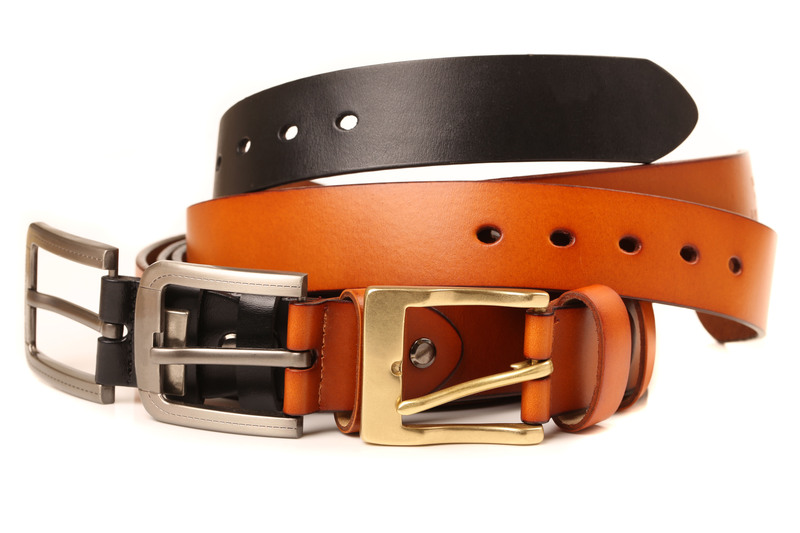How to Get Your Deposit Back with a Perfect Move-Out Clean
Moving out of a rented home or apartment can be both exciting and stressful. One of the most pressing concerns for tenants is the return of their security deposit. Landlords often require a move-out cleaning that meets their standards before they'll refund your full deposit. But how do you ensure a perfect move-out clean and get your hard-earned money back?
This comprehensive guide explains how to get your deposit back with a flawless move-out cleaning. We'll cover what landlords typically look for, practical cleaning tips, DIY strategies, and what to consider if hiring professional cleaners. Master these steps, and you'll maximize your chances of a full deposit return.
Why is a Move-Out Clean So Important?
Most lease agreements require tenants to leave their property in the same condition as when they moved in (minus general wear and tear). This means you are responsible for removing dirt, stains, and any alterations or damage. Many landlords use the move-out clean as a standard to judge property condition, and failing this can result in deductions from your deposit.
Key Benefits of a Thorough Move-Out Clean
- Maximize your deposit return - A clean home reduces the chances the landlord will withhold money for additional cleaning.
- Maintain a good rental history - Leaving your place spotless increases your chances of a positive landlord reference for future rentals.
- Less stress and disputes - A perfect move-out clean prevents disagreements over cleaning standards.
- Leave a good impression - It's just courteous to leave your former home clean for the next tenant.

Understanding Your Lease Agreement
Before you start your move-out cleaning, reread your lease agreement and any move-in checklist you completed. Many landlords provide specific cleaning checklists or standards that must be met. These might include:
- Carpet cleaning requirements
- Paint or wall repair expectations
- Yard and garage cleaning duties
- Professional cleaning receipts
Understanding your responsibilities will help you avoid unnecessary deductions. Take note of any special clauses that pertain to cleaning or repairs.
Step-by-Step Move-Out Cleaning Checklist
Follow this ultimate move-out cleaning guide to cover all bases and impress your landlord or property manager.
1. Gather Your Cleaning Supplies
- All-purpose cleaner
- Glass cleaner
- Baking soda & vinegar (for eco-friendly cleaning)
- Carpet or floor cleaner
- Scrub brushes, sponges, cleaning cloths, and mop
- Vacuum cleaner
- Magic erasers for walls/scuffs
- Trash bags
- Rubber gloves
2. Declutter and Pack First
Don't try to clean around boxes and clutter. Pack up all belongings and remove furniture first. This makes it much easier to spot stains, marks, and areas needing extra attention.
3. Tackle Room-by-Room Deep Cleaning
-
Kitchen:
- Clean inside and out of all appliances (oven, stove, fridge, microwave, dishwasher)
- Wipe down countertops, sinks, and backsplash
- Clean cupboard interiors and exteriors, removing crumbs and grease
- Degrease fans or hood vents
- Sweep and mop floors
- Remove all food debris and empty trash
-
Bathroom:
- Scrub toilets, sinks, bathtubs, and showers
- Clean grout, remove mold and hard water stains
- Polish mirrors and fixtures
- Empty and wipe down cabinets and drawers
- Mop floors and clean tile
-
Living Room & Bedrooms:
- Vacuum or sweep flooring
- Spot clean carpets (consider professional cleaning if required by lease)
- Clean baseboards, vents, and light fixtures
- Wipe all door handles, doors, and switch plates
- Dust and clean window sills, blinds, and tracks
- Patch up small holes and remove wall hooks or tape residue
-
General Cleaning:
- Wash all windows inside (and outside, if accessible)
- Remove cobwebs from ceilings and corners
- Empty all trash and clean bins
- Wipe down laundry machines (if provided)
- Check garage, balcony, or patio for debris
4. Pay Special Attention to Troublesome Areas
Most deposit deductions are for missed spots like greasy oven interiors, stove drip pans, overlooked drawers, or lingering shower mold. Use a detailed checklist or take a room-by-room approach to cover these.
5. Take Photographic Evidence
Once your move-out cleaning is complete, walk through the property and take time-stamped photos of every room, including appliances, floors, and any previously agreed repairs. This protects you in case of disputes about cleanliness or property condition when requesting your deposit back.
Common Reasons for Losing Your Deposit
Knowing the top reasons landlords withhold deposits for cleaning can help you avoid costly mistakes. These typically include:
- Unswept floors/carpets not cleaned
- Dirty kitchens (greasy oven, leftover food, sticky cabinets)
- Soap scum, grime, or mold in bathrooms
- Pet odors, stains, or pet hair
- Unpatched nail holes, wall marks, or stuck hooks
- Windows, sills, and blinds still dirty or dusty
- Yard left unkempt or full of trash
Using an extensive move-out cleaning checklist and double-checking every area will help ensure these issues are handled before you turn in your keys.
Should You Do It Yourself or Hire a Cleaning Service?
A DIY move-out clean can save money, but it requires time and energy--especially for larger homes or heavily used appliances. Ask yourself:
- How much time do I have before the move-out inspection?
- Do I have the supplies and ability for deep cleaning?
- Is my lease requiring a professional cleaning company or a carpet cleaning receipt?
Hiring a professional move-out cleaning service can provide peace of mind, especially for heavily soiled units or if you have limited time. Pros of outsourcing include:
- They follow detailed cleaning checklists that meet landlord requirements
- Most provide a cleaning guarantee and receipts
- Saves your time during a busy, stressful move
Just be sure to check reviews, get a written quote, and confirm what services are included.
Expert Tips for a Flawless Move-Out Clean
- Work from top to bottom - Start with ceilings, lights, and shelves, then finish with floors to catch all dust and debris.
- Spot-test cleaning products - Prevent damage to surfaces by using gentle, appropriate cleaners for wood, tile, or countertops.
- Set aside several hours (or even a full day) for cleaning - Don't leave deep cleaning to the last minute.
- Enlist help from friends or family for faster results.
- Check off each item as you finish to avoid missing key areas.
- Don't forget storage spaces like closets or utility rooms, which landlords will definitely check!
How to Address Minor Repairs
Cleaning is important, but minor repairs can also affect your deposit return. Before cleaning:
- Patch up small nail holes with putty and touch-up paint
- Remove wall-mounted items
- Fix loose cabinet handles or door knobs
- Replace burned-out lightbulbs
- Curtain rods, blinds, or window screens should be intact
If you're unsure about a repair, check your lease or ask your landlord for clarification.
How to Handle Pet-Related Cleaning
Pets can leave hair, stains, and odors that jeopardize your full security deposit. To ensure a perfect move-out clean with pets:
- Thoroughly vacuum and mop all floors (pay attention to edges and corners)
- Steam clean/spot treat carpets and upholstery
- Use enzyme cleaners to remove odors and stains
- Clean pet hair from vents and baseboards
- Sanitize litter trays or cages and remove all traces
Communicate with Your Landlord or Property Manager
Before handing over keys, ask for a pre-move-out inspection. Your landlord may provide feedback or point out any missed areas, giving you one last chance to address issues before your deposit is processed.
Be proactive: Provide receipts for any professional services, and keep a copy of your cleaning checklist and move-out photos. Open communication demonstrates your intent and helps resolve any potential issues quickly.
What to Do After Cleaning
- Do a final walk-through when the property is fully empty
- Double-check all closets, drawers, attic, basement, garage, and storage spaces
- Return all keys, fobs, or garage remotes according to lease instructions
- Provide your forwarding address for the deposit return
Remember, landlords in most jurisdictions have a legal deadline (often 14-30 days) to return your deposit along with a list of any deductions.

FAQs About Move-Out Cleaning and Deposits
Do I really need to hire a professional cleaner?
Not always. If you have the time, energy, and proper cleaning supplies, a careful DIY clean is often sufficient. However, professional cleaning is worth considering for large homes, extensive carpet stains, or when required by your lease.
My landlord says the place still isn't clean - what should I do?
Ask for specifics in writing. Review your move-out photos and cleaning checklist to dispute unfair claims. Offer to rectify any overlooked areas, if possible, before deductions occur.
Can my landlord deduct for "normal wear and tear"?
No. Typical wear (minor scuffs, faded paint, normal carpet use) cannot result in deposit deductions. Deductions only apply for excessive dirt, stains, or damage.
Conclusion: Secure Your Deposit with a Spotless Move-Out Clean
A successful move-out cleaning is your best tool for getting your full security deposit returned. By planning ahead, cleaning carefully, and addressing both dirt and minor repairs, you'll meet landlord expectations and leave your former home in excellent condition.
Whether you do it yourself or hire help, using a thorough checklist, photographing your work, and communicating with your landlord will set you up for success. As you move forward to your next home, close this chapter on a high note--with your deposit refunded in full!